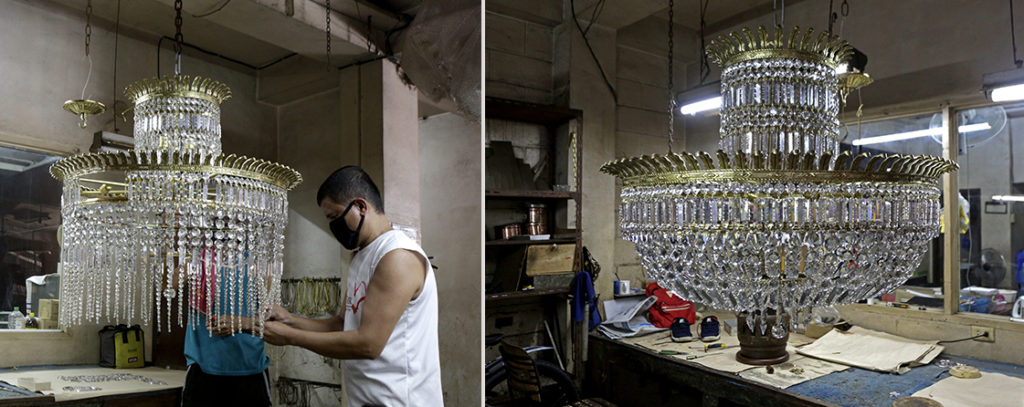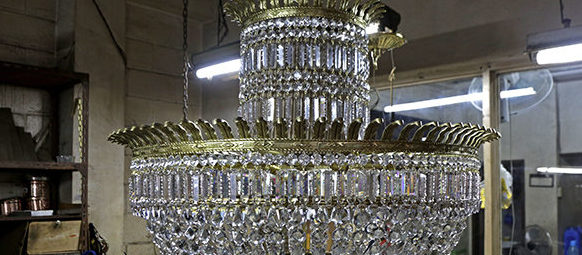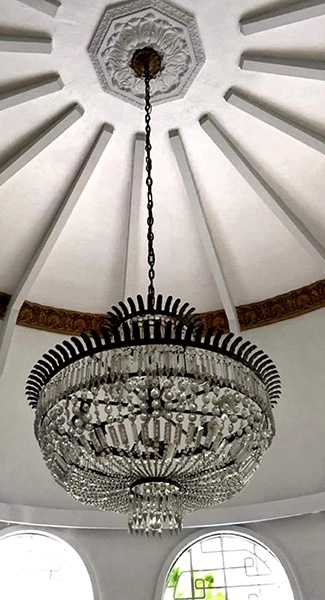
Palayan has restored thousands, of all types of chandeliers, over the years. But crystal chandeliers call for the most care. Glass and crystals are fragile materials and cannot be glued together if broken but must be replaced.
What gives us pause when accepting these projects is the age of the chandelier and its state of disrepair. Replacement for missing crystal and glass pieces of antique chandeliers are impossible to find locally. These chandeliers would have been likely imported from Europe. And even in Europe, it is very difficult to find specific parts of old chandeliers. There are dealers in the UK who specialize in antique chandelier parts. But one would have to get very lucky to find what you need from them.
Spanish chandeliers which made their way to the Philippines during our colonial days can still be bought from provincial mansions and estates. Some antique dealers also buy parts of broken Spanish chandeliers for sale to people like us. Again supply of these spare parts is not assured but occasionally show up in the market. Chandeliers from current foreign manufacturers (Baccarat, Daum, Lalique, Steuben, Tiffany, Waterford, Swarovski, etc.) are relatively easier to restore with respect to the sourcing of missing parts. Oftentimes, the same models are carried over many seasons. These traditional chandelier designs usually have ready parts for sale. Foreign manufacturers realize that breakages which occur during overseas shipment of their products create a secondary market for parts. The only problem here is the very high cost of parts when compared to the cost of the complete chandelier. Unfortunately too, these high-end manufacturers do not have local service for their products.
So What Chandeliers Are Worth Restoring
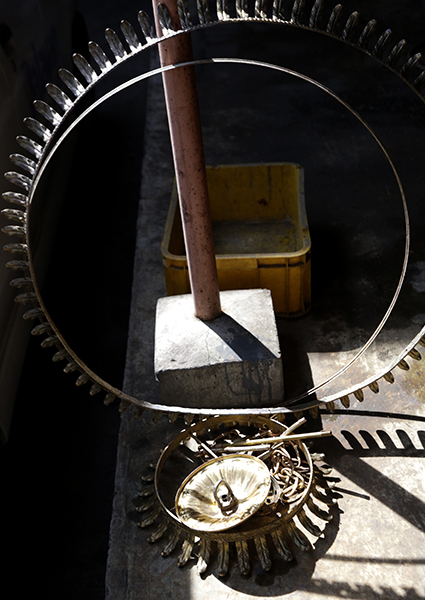
As a rule of thumb, they say that repair costs which exceed half of the original acquisition value argue for the thrashing of the broken item. If we follow this rule, chandeliers from European name brands, such as those cited above, should be restored because cost of local restoration would be a small percentage of their replacement values – of hundreds of thousands of pesos. In this category are also all those chandeliers, which may not be expensive per se, but nonetheless holds special sentimental value to its owner. Thus the rusting tin chandelier bequeathed by Lola Binang from the provincial ancestral home is a must for restoration at whatever reasonable cost. On the other hand, Chinese chandeliers, because they are so inexpensive, are generally not worthwhile to restore.
So What Do We Do To Make It New
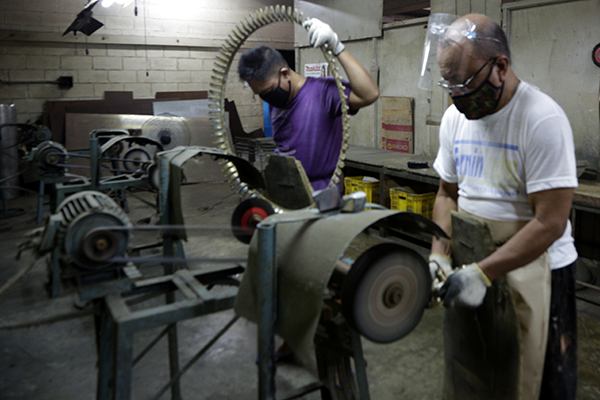
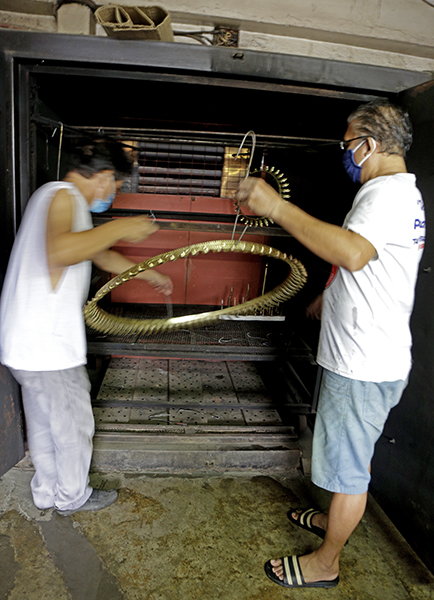
The first problem we encounter on these projects is the pulldown and conveyance of the chandeliers to our shop in Makati. Because of their fragility, the chandelier must first be completely dismantled before transportation to the shop. Parts are carefully packed for this trip.
Once we receive the disassembled chandelier, we then remove all the metal connectors that still hold the various parts together. With the glass parts separated, they are now ready for their thorough cleaning in a bath of diluted muriatic acid. This will remove the surface grime that has built up on the glass parts. Clean and clear again, these same crystal parts are given a final bath in mild detergent and water. They are then sundried.
The metal parts are separated for finishing. If made of brass or copper, they are soaked in diluted nitric acid to remove their dark patinas. After rinsing, they are subjected to machine polishing to bring back their shine. Sometimes, machine buffing is not possible because of the metal’s intricate designs and patterns. On these occasions, polishing is done by hand. Shiny brass (and satin brass) are sprayed with a clear auto acrylic coat and baked in an oven to dry and seal the shine. Such shine is good for 4-6 years.
If the metal parts are painted, the nitric acid also strips them of their old paint. After a coat of primer, they are wet painted in their original color. Powder coating is not done because powder colors are not always available in specialty hues.
The clean crystal pendalogues are painstakingly strung together with special brass pins. Old pins have been discarded because they are no longer shiny and have become brittle. A lot of labor goes into stringing the crystals together in a process locally called binubuo ang rosaryo.
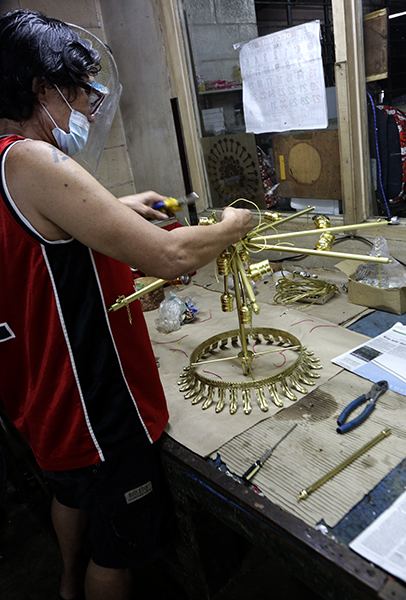
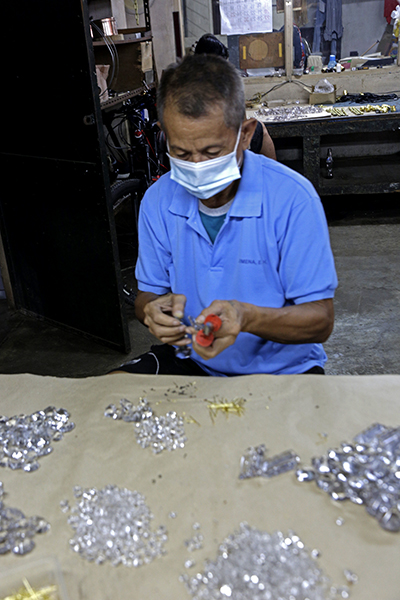
At this point, the chandeliers internal light tree is readied. New sockets and electrical wiring are installed. With the frame finished, each crystal strand is individually reattached. For certain chandelier designs, like the one shown, the chandelier can be delivered fully assembled on an A-frame dolly. Otherwise, chandeliers with glass arms are assembled on site prior to installation to avoid breakages during delivery. We have seen many customers gush with appreciation at their restored chandeliers, which were now hardly recognizable from their initial state. For after all, these were chandeliers that had been in use over some fifty years. Others however do not wait as long for restoration. These are usually timed with some major renovation of the house, how soon this may be.
In the meantime, restored chandeliers are easily maintained with gentle dry dusting. Soap and water is not recommended because it leaves smudges on the glass that are hard to remove. The cleaner has to moderate his dusting to protect the hanging crystals. And he should also move around the chandelier to clean the other far side and not turn the chandelier on its hanger. Doing so might break the chain or the electrical cords may be chafed and fray. Such simple maintenance should keep the chandelier in fine form for many more years until the next Palayan restoration.
